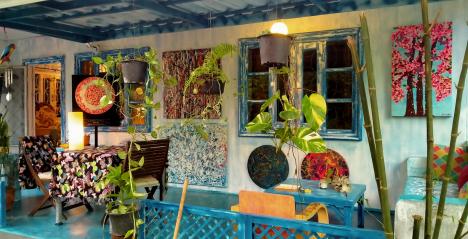Brick-and-mortar clothing businesses are in a transition period. More organisations are moving to an eCommerce model. In doing so they lower their overhead and find new audiences to purchase their products.
As a result, the compound annual growth rate (CAGR) for retail eCommerce is valued to be $675 billion by 2023. So, what's an offline retail outlet to do? There are changes to make that draw customers into your storefront. Here are some design tips that will elevate your clothing business. The image source is Pexels
Create Different Zones
Your clothing business should have three zones with different environments. The first one, the welcome zone, introduces the customer to your outlet. It consists of window and floor displays and information on special releases. The product zone is where the customer shops. This should be arranged in such a way that paths lead to various sub-zones of clothing. This area needs to be open so customers don't feel crowded among others and the products. The closing zone is where transactions are completed. It features the dressing rooms and check-out stands. A closing zone is also a place to display last-minute, quick-selling items.
Wide Spaces
Providing adequate space for consumers to purchase your offerings is critical no matter the retail space's size. You could own a 10,000 sq. ft. store or a 1,000 sq. ft. boutique. If spaces are crowded and cluttered it keeps customers away. Ensure the paths throughout the store are wide enough to accommodate more than one person. There should be enough space for two people to peruse clothing displays on opposite sides of a path. Furthermore, don't crowd sales floors with too many racks. Customers don't want to fight through a jungle of fabric to reach a display.
Use Appropriate Lighting
A clothing business that's too dark confuses customers. Conversely, a brightly lit space could cause people to quickly purchase items without further examination. Thus, your space needs a middle ground to entice customers in and keep them there until a purchase is made. This requires a mix of lighting elements. For instance an LED lightbox provides a warm and welcoming backlit space for images or clothing samples. Directional lighting is used to highlight sales displays. Ambient lights enhance the environment while avoiding the harshness of fluorescent strips.
Minimise Clearance Racks
You're bound to have inventory left over each season. The easiest way to get rid of it is to put the items on a spinning rack with a big clearance sign on top. This is a bad idea. If your goal is to sell unique products that include your designs, then you don't want customers to make a beeline to the clearance rack. There's a good chance they'll avoid the other displays for a deal. Instead, put the clearance items on a tastefully done wall rack. Instead of a huge clearance sign add discount tags to each piece of clothing.
Add QR Codes to Signs
One of the things online outlets do is provide detailed clothing descriptions. They're stories more than simple details on size and colour. This is something you should do for your clothing business. However, since you don't have signage space for long essays, use QR codes to get customers to the right location.
A scan of this code from a mobile device could bring up a website with the history of the product. Furthermore, you might offer additional size or colour options not available in the store. Overall, more information about the piece encourages the customer to learn more about your outlet in general.
Add Digital Signage
Digital signage has several advantages. First, you save a good deal of paper. There's no need to continually print new signs when prices go down. Plus, you avoid the messiness of writing over prices if there's a mistake. Second, it gives you an additional space to display mockups. You can program a digital sign to rotate images of several items of clothing in different sizes and colours. This provides customers with an idea of how something would look on them.
Conclusion
In the end, the goal of your clothing business is to make it so unique that customers forego online shopping. Follow these design tips to get a leg up on the physical and digital competition.










